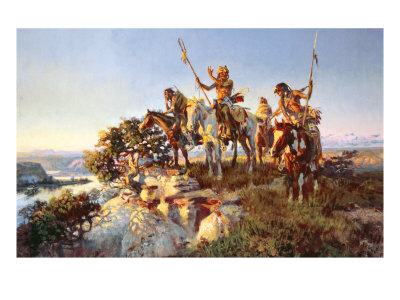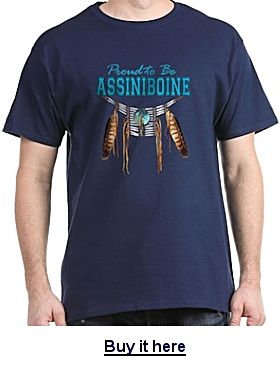Caddo Treaties (Also spelled or pronounced Cadoe) Treaty With The Caddo, 1835 Treaty With The Comanche, Aionai, Anadarko, Caddo, Etc., 1846Treaty with the Comanches and other tribes. Articles of a treaty made and concluded at Council Springs in the county of Robinson, Texas, near the Brazos River, this 15th day of May, A. D. 1846, […]
Treaties by Tribe
Acts of Congress Agreements Executive Orders
From 1774 until about 1832, treaties between individual sovereign American Indian nations and the U.S. were negotiated to establish borders and prescribe conditions of behavior between the parties.
The form of these agreements was nearly identical to the Treaty of Paris ending the Revolutionary War between the U.S. and Great Britain. The negotiations ended in a mutually signed pact which had to be approved by the U.S.Congress. Non-tribal citizens were required to have a passport to cross sovereign Indian lands.
From 1832 until 1871, American Indian nations were considered to be domestic, dependent tribes. Negotiated treaties between tribes and the U.S. had to be approved by the U.S. Congress.
In 1871, the House of Representatives ceased recognition of individual tribes within the U.S. as independent nations with whom the United States could contract by treaty, ending the nearly 100 year old practice of treaty-making between the U.S. and American Indian tribes
Between 1778, when the first treaty was made with the Delawares, to 1871, when Congress ended the treaty-making period, the United States Senate ratified 370 treaties. At least 45 others were negotiated with tribes but were never ratified by the Senate.
Congress ended treaty-making with Indian tribes in 1871. Since then, relations with Indian groups have been formalized and/or codified by Congressional acts, Executive Orders, and Executive Agreements.
The treaties that were made often contain commitments that have either been fulfilled or subsequently superseded by Congressional legislation.
In addition, American Indians and Alaska Natives can access education, health, welfare, and other social service programs available to all citizens, if they are eligible. Even if a tribe does not have a treaty with the United States, or has treaties that were negotiated but not ratified, its members may still receive services from the BIA or other federal programs, if eligible.
The relationship between federally recognized tribes and the United States is one between sovereigns, i.e., between a government and a government. This “government-to-government” principle, which is grounded in the United States Constitution, has helped to shape the long history of relations between the federal government and these tribal nations.
Because the Constitution vested the Legislative Branch with plenary power over Indian Affairs, states have no authority over tribal governments unless expressly authorized by Congress. While federally recognized tribes generally are not subordinate to states, they can have a government-to-government relationship with these other sovereigns, as well.
Federally recognized tribes possess both the right and the authority to regulate activities on their lands independently from state government control. They can enact and enforce stricter or more lenient laws and regulations than those of the surrounding or neighboring state(s) wherein they are located. Yet, tribes frequently collaborate and cooperate with states through compacts or other agreements on matters of mutual concern such as environmental protection and law enforcement.
Tribes possess all powers of self-government except those relinquished under treaty with the United States, those that Congress has expressly extinguished, and those that federal courts have ruled are subject to existing federal law or are inconsistent with overriding national policies. Tribes, therefore, possess the right to form their own governments; to make and enforce laws, both civil and criminal; to tax; to establish and determine membership (i.e., tribal citizenship); to license and regulate activities within their jurisdiction; to zone; and to exclude persons from tribal lands.
Limitations on inherent tribal powers of self-government are few, but do include the same limitations applicable to states, e.g., neither tribes nor states have the power to make war, engage in foreign relations, or print and issue currency.
Any “special” rights held by federally recognized tribes and their members are generally based on treaties or other agreements between the tribes and the United States. The heavy price American Indians and Alaska Natives paid to retain certain rights of self-government was to relinquish much of their land and resources to the United States. U.S. law protects the inherent rights they did not relinquish. Among those may be hunting and fishing rights and access to sacred sites.
Kiowa Treaties
22 ViewsAlternate Names/Alternate Spellings: Kioway Kiowa Treaties: 1837 Treaty With The Kiowa, Etc. 1853 Treaty With The Comanche, Kiowa, And Apache 1865 Treaty With The Comanche And Kiowa 1867 Treaty With The Kiowa And Comanche 1867 Treaty of Medicine Lodge Creek (with the Kiowa, Comanche, and Apache)
Comanche Treaties
22 ViewsThe Comanches were the first Native people to adopt the classic horse-mounted lifestyle of the Plains. Shoshone speakers, including proto-Comanches, probably moved to the Northern Plains in the sixteenth century.
This article is the actual text of a treaty made with the Kiowa, Comanche, and Apache Indians on October 21, 1867 at the Council Camp on Medicine Lodge Creek, Kansas.
Shoshone and Bannock Treaties
22 ViewsShoshone and Bannock Treaties (Also spelled Shoshoni) Treaty With The Eastern Shoshoni, 1863Treaty With The Shoshoni—Northwestern Bands, 1863Treaty With The Western Shoshoni, 1863Treaty With The Eastern Band Shoshoni And Bannock, 1868 Famous Shoshone
Fort Atkinson was the first regular army post on the Santa Fe trail in the heart of the Indian country. It was part of the rapidly expanding American military frontier in the Far West following the Mexican War. As people traveled westward to occupy new lands for farming and ranching, rushed for gold, and exploited other natural resources of the vast continent, the need increased for military protection from the Indians whose homelands were being iinvaded. In 1853 a treaty was struck between the US Government and the Comanche, Kiowa and Apache Indians at Fort Atkinson.
I-on-i Treaties
23 ViewsDo you know who the I-on-I Tribe was? If so, please tell us about them. We found reference to them in one treaty.
Ho-Chunk Treaties
22 ViewsThe Ho-chunk signed a total of six treaties with the United States. The first three treaties signed by the Hochunk Tribe and the US Government were efforts to create peace with the United States and neighboring tribes.
In 1816, the first treaty between the United States and the Ho-Chunk was signed to end hostilities heightened by the War of 1812 in which the two nations were on opposing sides. After the war, the Ho-chunk and other Midwestern tribes began to fight among themselves, with war parties avenging past wrongs and fighting to secure new hunting territories.
The first treaty signed by the United States was with the Delaware (also known as Lenape) at Fort Pitt in 1778. The Articles of Confederation were adopted between the states a little over a year earlier in 1777, to establish a government independent of British rule. The primary purposes of the treaty with the Delaware was to gain Delaware trade, and political and military alliance on the side of the Americans during the War of Independence. The British likewise sought military and political alliances among the Indian nations to fight against the rebellious Americans.
1846 Bear Spring Treaty (Navajo)
22 ViewsThe Bear Spring Treaty was the first treaty made with the Navajo tribe. It affected the traditional Navajo homelands, which stretched from Arizona through western New Mexico, where there was a long history of Southwest bands raiding and trading with each other all the way back into the late 1500s. The people who shared this geographical area included Navajo, Spanish, Mexican, Apache, Comanche, Ute, and after 1846, American settlers. A Navajo raid on Socorro, New Mexico near the end of September, 1846, precipitated this American Indian treaty with the United States.
1835 Treaty of New Echota (Cherokee)
22 ViewsThis is the actual wording of the Treaty of New Echota, made with the Cherokee on December 29, 1835.
1855 Yakama Nation Treaty
25 ViewsThe Yakama Nation Treaty of 1855 was signed by Govenor Isaac Stevens and fourteen indian chiefs from various indian bands. Collectively, they now form the Confederated Tribes and Bands of the Yakama Nation.
The Treaty With The Cheyenne And Arapahosigned on October 14, 1865 was ratified on May 22, 1866, and proclaimed on February 2, 1867.
The treaty with the Apache, Cheyenne, and Arapaho signed on October 14, 1865 was presented on October 17, 1865, ratified on May 22, 1866 and went into effect on May 26, 1866. This is treaty 14 Stat., 713.
Assiniboine (Nakoda) Treaties
22 ViewsThe Assinaboine are the Nakoda branch of the Sioux. They were once all one tribe, but split due to disagreements and eventually became enemies and separate tribes.
Arikara Treaties
22 ViewsThe Arikara signed three treaties with the United States. They were a semi-nomadic people who lived on the Great Plains of the United States of America for several hundred years. The Arikara separated from the Pawnee before White contact.
Shasta Treaties
22 ViewsHome :: Treaties by Tribe :: Treaties by Tribe A-C :: Shasta (Chasta) Treaties
The Confederated Tribes of the Grand Ronde Community of Oregon (CTGR) consists of twenty-seven Native American tribes with long historical ties to present-day Western Oregon between the western boundary of the Oregon Coast and the eastern boundary of the Cascade Range, and the northern boundary of southwestern Washington, and the southern boundary of Northern California. One of these tribes are the Chasta Indians, now known as Shasta Indians.
Arapaho Treaties
22 ViewsThe ARAPAHO (Also ARRAPAHOE; ARAPAHOE) are a tribe of Native Americans historically living on the plains of Colorado and Wyoming. They were close allies of the Cheyenne Indians and loosely aligned with the Lakota and Dakota. The Arapaho language (Heenetiit), is an Algonquian language closely related to the Gros Ventre language (Ahe/A’ananin), whose people are seen as an early offshoot of the Arapaho.
Anadarko Treaties
22 ViewsHome :: Treaties by Tribe :: Indian Treaties A-C :: Anadarko Treaties
The Anadarko Indians were part of the Caddo Confederacy. Anadarko is a derivative of the Caddo town of Nadarko in eastern Texas, and is usually translated to mean “wild honey.”
Aionai Treaties
23 ViewsHome :: Treaties by Tribe :: Indian Treaties A-C :: Aionai Treaties
Who were the Aionai? If you know more about them, please drop us an email through our Contact form.
Apache Treaties
22 ViewsThe Apache Indians signed six different treaties with the United States between 1852 and 1867.
1852 Apache Treaty
22 ViewsThis is the actual wording of a treaty made at Santa Fe, New Mexico on July 1, 1852 between representatives of the US Government and the Apache Nation.
Crow tribe asserts hunting and other treaty rights granted by the Fort Laramie Treaty of 1868
22 ViewsThe Crow tribal government has asserted tribal rights on key issues that include off-reservation hunting and road access to the Bighorn Canyon National Recreation Area.
Crow Chairman Darrin Old Coyote introduced a series of five joint resolutions that the Crow Legislature approved in a special session May 7. Old Coyote signed them on May 14. The session was timed to coincide with the 145th anniversary of the signing of the 1868 Fort Laramie Treaty.
Home :: Treaties by Tribe :: Treaties by Tribe A-C :: Treaty With The Comanche, Aionai, Anadarko, Caddo, Etc., 1846
The United States sent Pierce M. Butler and M.S. Lewis to negotiate a treaty with the Texas Indians in May of 1846. Butler knew most of the Caddo chiefs, but became ill, so Lewis, who was less experienced and competent took charge. Lewis collected the Indian signatures on separate pieced of paper, but did not identify them by tribe. Later it was revealed that he wrote the actual treaty after he returned to Washington.
This is the exact wording of the treaty made at Council Springs, Texas on May 15, 1846 between the United States and 63 Indians from the Comanche tribe, I-on-I Band (also sometimes called Hainai, Aynais, Aynay, Ainai, and Ayonai – they were the primary group in the Hasinai confederacy and part of the greater Caddo Tribe.), the Ana-da-ca Band (Anadarko Tribe),Cadoe Tribe (Caddo tribe), Lepan (Lipan Apache), Long-wha tribe (the Longwha cannot be identified except for their inclusion in the preamble of this treaty – they are not included in the signature section), Keechy Tribe, Tah-wa-carro (Tahuacarro or Tahwacarro – Who are they?), Wichita, and Waco tribes of Indians.
- 1
- 2



